General Dentistry
Fillings
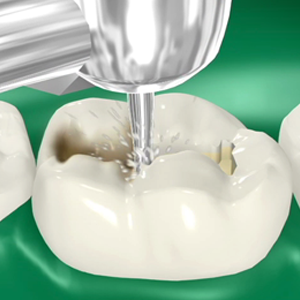
In the past, cavities could only be treated with unsightly metal fillings that are alloys made from several metals and mercury. These fillings, especially when close to the front of the mouth, are highly noticeable and unaesthetic. Sometimes, the filling is so large that it causes discoloration of the entire tooth. These fillings (or restorations) often weaken teeth due to the large amount of the original tooth that has to be removed. Modern dentistry has increasingly turned to tooth colored or composite fillings as a strong, safe and more natural looking alternative.
Crowns
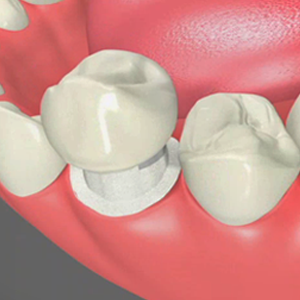
When a tooth is fractured, has a large old filling, or is severely damaged by decay, your dentist may recommend the placement of a full coverage crown or “cap.” Crowns strengthen and protect the remaining tooth structure and can significantly improve the appearance of your smile.
There are several types of crowns which include the full porcelain or ceramic crowns, porcelain fused to metal crowns (also known as PFM's) and all-metal crowns.
Fitting a crown usually requires at least two visits to the dentist's office. Initially, the dentist removes decay and shapes the tooth then an impression is taken and finally a temporary crown is fabricated which holds the tooth's position and protects it until the permanent crown is cemented. During the next visit, the dentist removes the temporary crown, fits and adjusts the final crown and cements the crown into place.
Bridges
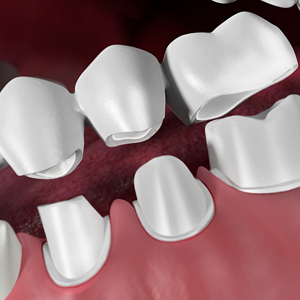
Few incidents have greater impact on dental health and personal appearance than the loss of a tooth. When one or more teeth are missing, the remaining teeth can drift out of position which can lead to severe changes in the bite, the loss of additional teeth, decay and gum disease, etc. When tooth loss occurs, your dentist may recommend the placement of a bridge. A bridge is one or more replacement teeth anchored by one or more crowns on each side to fill the space created by the missing tooth or teeth.
Root Canal Treatment
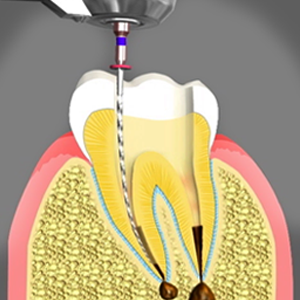
It is a field of dentistry that treats the root canal system found within the tooth itself. When decay extends to the pulp or the “nerve” inside the tooth, the person almost always experiences discomfort. The pain typically increases at night and may be aggravated with cold, hot, or sweet foods. Root canal therapy relieves this discomfort and saves the tooth itself.
Root canal treatment begins with profound local anesthesia. The tissues inside the tooth are accessed by prepping down inside the tooth where the living tissue is located. Then mechanical removal of the infected tissues is completed which also shapes the canals, preparing them for a nice smooth, clean and sterile fill. The canals are cleaned with very potent chemicals and are then filled with a bio-inert or bio-compatible material known as gutta-percha which is even further sealed by a sealer material.
Following root canal treatment, the tooth becomes more fragile due to physical weakening from the original decay and the fact that the tooth is no longer nourished from the inside out since all the living tissues have been removed by mechanical instrumentation. This drying out of the tooth renders the tooth much more prone to fracture which is why a full coverage crown is almost always indicated. This helps preserve the natural tooth for the longest time possible. Sometimes color changes are also observed in root canal treated teeth that have not had crowns. Sometimes, depending upon the amount of tooth structure that is lost, a post (typically a fiber post) will need to be placed for added retention of the crown. To learn more please call our office today.
Extractions
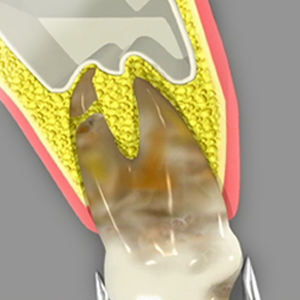
Tooth extraction is performed only when the dentist decides that removing it can improve the oral health of the patient. Tooth decay, crowding and risk of dental infection are some of the common reasons for tooth extraction. Dentists make a note of the medical condition of the patient before performing tooth extraction. It is a process done with the help of local anesthesia as well as nitrous oxide, oral sedation, and/or IV moderate conscious sedation. Depending on the complexity of the extraction process, surgical removal of the tooth may be necessary. Your dentist or surgeon will provide post-operative care instructions which helps in quick recovery from the treatment and will also help reduce the odds of getting a “dry socket.” Pain medications and ice bags can help reduce post operative discomfort and swelling. Some swelling and discomfort is expected because extractions are surgical procedures.
Complete Dentures
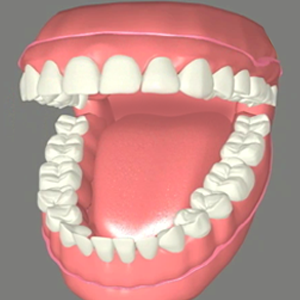
Complete dentures replace the full set of teeth from upper and lower jaws of the dentition. They can aid in chewing and biting functions. Dentures can be directly fixed over the gums, or they can be supported by implants which provides a significant increase in comfort and function. Remember, complete dentures are NOT direct replacements for your teeth. They will only have approximately 30% of the normal chewing function as your natural teeth once did. Complete dentures are one of the oldest methods of replacing lost teeth. There are two types of complete dentures—conventional and immediate dentures. With immediate dentures, the patient will have all the remaining teeth extracted and the new set will be immediately delivered. This prevents the patient from having to go without any teeth whatsoever (i.e. the patient leaves with the new teeth in place that day). The other type of complete dentures is the conventional denture. This process begins with a healing period of 12-16 weeks following the extractions during which time the gum tissues will heal over the sockets and new bone will fill in the holes where the tooth roots once were. Several try in appointments are made where the dentist will to record the jaw relationship as well as the new bite for the patient. After the lab has enough information, the new denture will be processed and then delivered. If the patient has had a previous set of dentures, the waiting period for the healing phase has already occurred and the impression phases may be started immediately. Remember, surveys show approximately 80% of all denture wearers still use a denture adhesive in order to gain better function from their dentures. The best option for improved denture function is to use dental implants!
Partial Dentures

Partial dentures, or RPD's, are removable appliances used to replace one or more missing teeth. This type of denture is an option when there are some healthy teeth left in the dentition. Partials have clasps or other forms of mechanical retainers which are used to keep them firmly attached to the teeth which helps the patient chew more efficiently. They can be supported by the natural teeth or attached to implants. Sometimes dental crowns may be needed to improve the fit of partial dentures to the natural teeth or to create a much more esthetic outcome. Partial dentures are removable and may cause some discomfort or pose an inconvenience to the patient. Over a longer term, partial dentures can still be a sufficient restoration. It is important to take proper care of the appliance and to maintain optimal oral hygiene when living with dentures to avoid unnecessary complications.
Implants
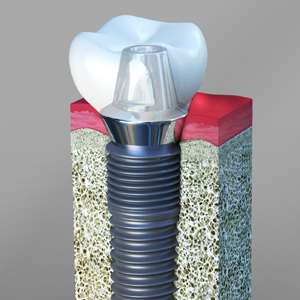
When a tooth is lost the specialized bony process that houses the tooth begins to reabsorb. This causes a decrease in width and height of the bone in the area the tooth is lost. Neighboring teeth and opposing teeth begin to move into the space. This causes food traps, subsequent decay, gum disease and abnormal forces being transmitted to teeth leading to possible fractures which may necessitate root canal treatment or extraction. Loss of teeth can also cause the cheek and lips to collapse giving an aged look. Simply extracting a tooth does not usually eliminate the problem. In fact, it usually creates several more problems down the road!
The consequences of tooth loss can be prevented by replacing the lost tooth in a timely manner. Although there are several options to replace a missing tooth, the number one choice for replacing lost teeth are dental implants. Implants are tiny titanium screws or posts that are surgically placed in the bone. Once integrated into bone, they act like roots onto which small posts are attached which protrude through the gums. These posts provide stable anchors for crowns, bridges, denture attachments, etc. Implants maintain the bone height by stimulation and prevents unnecessary mutilation of adjacent teeth for bridge placement. Sometimes this trauma to the teeth created during the bridge prep results in more root canals which further adds to the expense. Since implants are titanium posts and are highly bio-compatible, there is no chance for dental decay on implants. Diligent home care is still required, however, in order to maintain the health of the tissues surrounding the implant or an infection may cause implant failure. Implants can service you for several years with regular professional cleaning and proper home care. They're the next best thing to your natural tooth!
Many people who are missing a single tooth opt for a fixed bridge, but a bridge may require significant cutting down of healthy, adjacent teeth that may or may not need to be restored in the future. Then there is the additional cost of possibly having to replace the bridge once, twice or more over the course of a lifetime due to decay or gum problems affecting the anchor teeth. The long term costs of a bridge versus an implant may be three or four times the overall cost of the initial implant. Remember, if an implant crown has to be replaced, it is usually a single crown replacement since the implant body itself is almost always still good. Replacement of a bridge is at least the cost of three crowns every single time!
Another option to replace missing teeth is a removable partial denture or complete denture depending on the number of teeth missing. The chewing efficiency with a denture is significantly reduced to more than half of that of natural teeth and typically only about 30% as efficient. The teeth that support the partial denture are weakened due to the excessive loads acting on them and many times are eventually lost. The denture rests on the gum causing tissue abrasion and possibly bone loss. Removable dentures may slip or cause embarrassing clicking sounds while eating or speaking.
Studies show that within five to seven years there is a failure rate of up to 30% in teeth located next to a fixed bridge or removable partial denture! This leads to even more costs for the patient.
Who is a candidate for implants?
Almost anyone who is missing one or several teeth is a candidate for implants. With the exception of growing children, dental implants are the solution of choice for almost all people of all ages, even those with the following health concerns:
Existing Medical Conditions: If you can have routine dental treatment, you can generally have an implant placed. While precautions are advisable for certain conditions, patients with such chronic diseases as high blood pressure and diabetes are still usually successful candidates for dental implant treatment.
Gum Disease or Problem Teeth: Almost all implants placed in patients who have lost their teeth to periodontal disease or decay have been successful. Global studies consistently show a 97% 10 year success rate!
Currently Wearing Partials or Dentures: Implants can replace removable bridges or dentures, or they can be used to stabilize and secure the denture, making it much more comfortable as well as significantly more efficient.
Smokers: Although smoking lowers the success rate of implants, it doesn't eliminate the possibility of getting them.
Bone Loss: Bone loss is not uncommon for people who have lost teeth or had periodontal disease. Your surgeon is trained and experienced in grafting bone to safely and permanently secure the implant.
Implant tooth replacement in children is usually deferred until their jaw growth is complete. A general rule of thumb says that the patient needs to be at least 16 years old. There are, however, some instances when a dental implant may be appropriate, such as when it is part of the child's orthodontic treatment plan. Your family dentist or orthodontist can guide you in this instance.
Procedure
Dental implant placement usually takes two surgical appointments:
- During the first surgical appointment the implant site is prepared to receive the implant following strict aseptic procedures. The selected size of the implant is placed in the prepared site. The gum tissue is then sutured over the implant. The implant takes 4- 6 months to fuse with the bone.
- During the second surgical appointment the implant is uncovered and the appropriate post is attached which will serve as the anchor for the replacement crown. An impression of the post is taken and sent to the lab for the precise fabrication of the implant crown. During this time a temporary crown may placed but not every time. Once the final crown is back it is either cemented with permanent cement or torqued into place with a tiny screw.
Prophylaxis / Cleanings
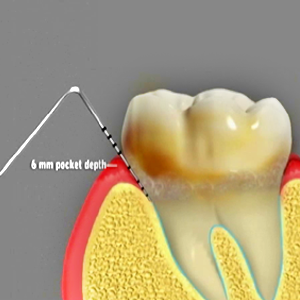
A dental prophylaxis is also called a dental cleaning or simply a “cleaning.” It may also be referred to as a "prophy" by the dental team. It is one of the most effective forms of preventing dental diseases. Dental prophylaxis can help eliminate the need for dental fillings, crowns and almost every other form of dental restoration! When the patient is free from dental plaque there are much less chances of tooth decay. In addition, frequent dental cleanings and checkups enable the dental team to diagnose dental issues when things are still relatively small which typically allows them to perform the most conservative treatment possible and sometimes remedy the issue with non-invasive or therapeutic treatments. A dental cleaning involves the examination of the teeth and identifying early steps to help avoid tooth decay. Plaque and irritants are completely removed from the oral cavity during the process. Physical debridement using hand instruments as well as the removal of calculus/tartar using ultrasonic technology followed by polishing and flossing are the methods most commonly used methods to perform a cleaning.
Scaling And Root Planing

Scaling and root planing, also known as deep cleaning, is performed to remove tarter and infectious bacteria from the root surfaces of the teeth. Dentists or hygienists use special tools to remove the tarter due to deep pockets or bone loss. This can help stabilize the bone and gum tissues. The intention is to stop the current disease process and to help prevent the disease from worsening. If left untreated periodontal diseases can affect the tooth roots and cause them to eventually loosen, become infected, and possibly even fall out. The process of scaling and root planing is done in multiple visits, usually two. This depends on the amount of tarter present over teeth and root surfaces. After the procedure is complete, patients should follow the tips provided by the dentist or hygienist as well as visit the practice routinely to keep the periodontal disease in control. Most patients with periodontal disease will require more frequent visits, typically every three to four months.
Sedation Dentistry

Through the modern miracles of sedation dentistry, specially trained dentists can now safely treat anxious patients and sometimes even accomplish all dental work in one visit that may have required many more visits without it!
Dental phobia, or fear of the dentist, is not uncommon. In fact, many people avoid dental treatments altogether, as the stress and anxiety can be overwhelming. As a result, dental health deteriorates. With sedation dentistry, you can get the smile you've always wanted without the stress and fear of the dental procedures!
There are several types of sedations. Your dentist will do an oral exam and review your medical history as well as perform a patient interview in order to assess which sedation is best for you.
- Nitrous oxide (offered in our office)
- Oral sedation (offered in our office)
- IV moderate conscious sedation (offered in our office)
- Deep sedation and general anesthesia (not offered in our office)
- Who is a candidate for sedation dentistry?
Nearly all patients are candidates for some form of sedation dentistry. Patients who have the following may benefit from our sedation services:
- High fear and anxiety for dental treatment
- Traumatic dental experiences in the past
- Difficulty getting numb
- A bad gag reflex
- Very sensitive teeth
- Complex dental problems
- Limited time to complete dental care
If you are one of those patients who hate needles, shots, the noises, smells and taste associated with dental care, call our office for a consultation with our doctor and see how you can benefit from sedation dentistry. Don't let anxiety and fears come in the way of your dental care!
How does Oral Sedation work?
For dental treatment under oral sedation, you will place a couple pills under your tongue an hour before treatment begins. Sometimes this is adjuncted by nitrous oxide or another medication that is swallowed. This will help you feel relaxed and sleepy. These medications have an amnesiotic effect which typically reduces or even eliminates the patient's memory of the dental treatment altogether! It is necessary to have a responsible adult accompany you to the office who will remain in the building for the entire treatment. During your dental treatment, a trained assistant will be with you monitoring vital signs. Our doctor and our experienced team will perform all necessary dental work and though you are in a deeply relaxed state, you will be responsive to any questions or requests. When the procedures are complete, you will be gently awakened and will typically have no memory of your treatment.
Request an Appointment
Our Reviews
I had a dental emergency and I was treated quickly and with great care. I am so impressed with the service of everyone. I can not thank you enough!
Leann CherryI’ve known Dr. Renfroe for many years and he is absolutely great! I highly recommend him and you should give him a call to set up your next appointment.
Will Canterbury
